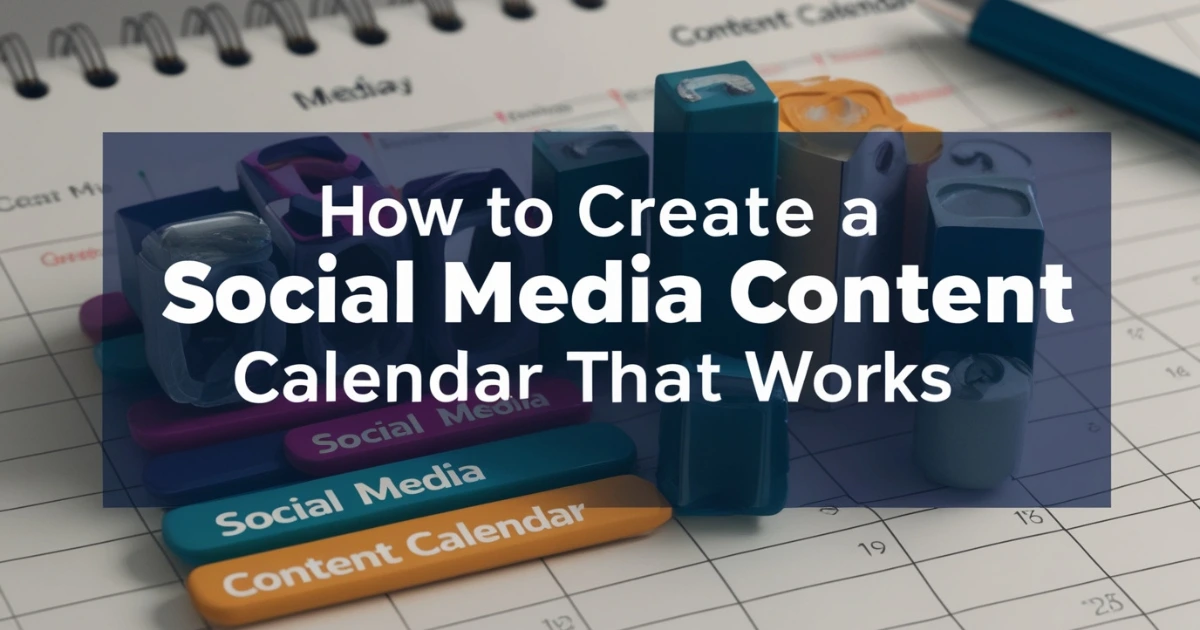If your brand’s social media feels like a scattergun—posting whenever inspiration strikes, with no real strategy behind it—you’re not alone. Inconsistent posting is one of the biggest reasons businesses struggle to grow online, especially in competitive markets like Thailand. But here’s the good news: this is easily fixable with one powerful tool—an effective social media content calendar.
A solid content calendar does more than just schedule posts. It brings clarity to your messaging, aligns content with your business goals, and frees up mental space so you’re not scrambling for ideas every other day. Whether you’re managing an Instagram content schedule for a boutique brand or refining a Facebook post strategy for a growing business, a calendar is your strategic edge.
This guide breaks down the step-by-step process of building a calendar that actually works—from goal-setting and content planning to choosing the right tools and measuring success. No fluff, no filler—just actionable insights tailored for businesses doing social media marketing in Thailand.
Get ready to take control of your content, grow your audience, and make your social media presence a true business asset. Let’s dive in.
Why You Need a Social Media Content Calendar
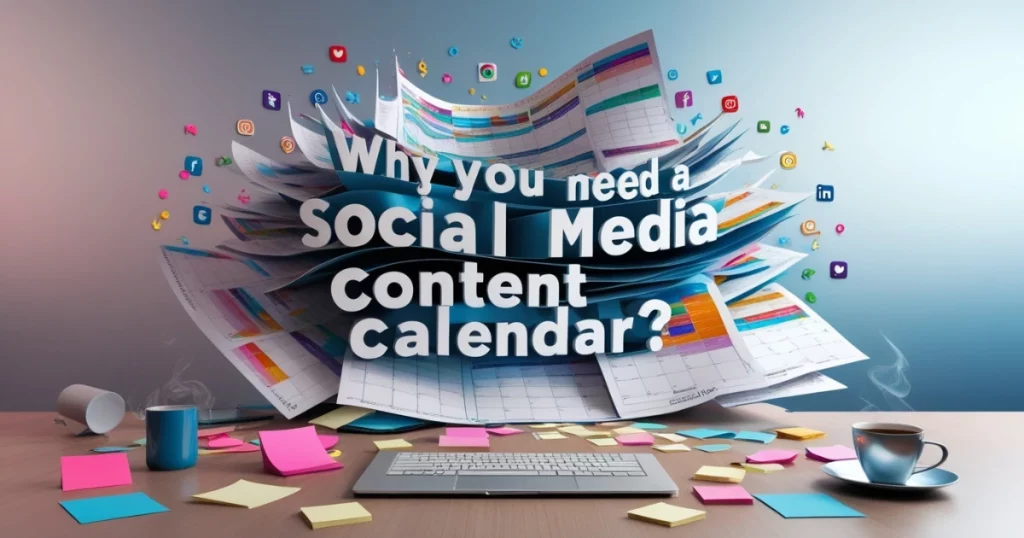
The Problem with Posting on the Fly
When your content is created in the moment—without strategy or structure—you open the door to inconsistency. One week it’s reels every day, the next you vanish for ten days. This kind of posting roulette results in:
- Inconsistent brand messaging
- Missed opportunities to ride trending content
- A disengaged audience who forgets why they followed you in the first place
In short, you’re playing defence instead of offence.
The Power of Planning Ahead
A social media content calendar flips the script. It allows you to:
- Strategically align posts with your business goals
- Maintain a consistent brand voice across platforms
- Schedule content around key events, product launches, or seasonal promotions
- Keep your team (or just yourself!) organised and focused
In highly active digital markets like social media marketing Thailand, structure is what separates the visible from the invisible.
From Chaos to Measurable Growth
With a calendar in place, your social media strategy becomes trackable. You can measure what’s working, analyse audience behaviour, and optimise your content using real data—not guesswork. Plus, platforms like Facebook and Instagram reward consistency with better reach and algorithmic favour.
So whether you’re building an Instagram content schedule for visual storytelling or a Facebook post strategy to drive website clicks, having a plan in place puts you ahead of the game.
🔹 Summary Box:
A good calendar eliminates guesswork and ensures your content aligns with business goals, audience behaviour, and platform algorithms.
Setting Clear Goals Before You Plan
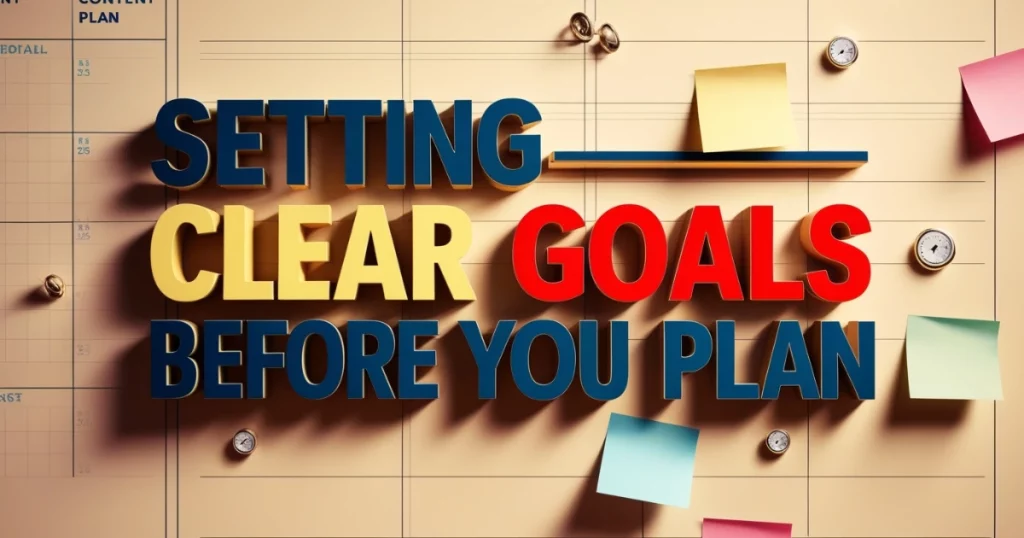
Before you start filling up your calendar with content ideas, take a step back and ask yourself: What exactly do I want to achieve with my social media? Without clear goals, even the most beautifully designed calendar won’t deliver results.
Define Your Social Media KPIs
Start by setting Key Performance Indicators (KPIs) that align with your broader marketing objectives. These could include:
- Engagement: likes, shares, comments, saves
- Conversions: enquiries, sign-ups, purchases
- Traffic: click-throughs to your website or landing pages
- Brand awareness: reach, impressions, follower growth
Once your KPIs are in place, you can tailor your content accordingly.
Match Content Types to Objectives
Each type of post serves a different purpose. Align your content formats with your goals:
- Carousels & graphics → great for educating and providing value
- Reels & Stories → ideal for increasing reach and humanising your brand
- Live videos & testimonials → boost trust and drive conversions
- Polls & questions → encourage direct audience interaction
Set Platform Benchmarks
Consistency isn’t just about frequency—it’s about relevance per platform. For example:
- Instagram: 5–7 posts/week, mix of reels, stories, and carousels
- Facebook: 3–5 posts/week, focus on community engagement and links
By defining your goals upfront, every piece of content will serve a purpose—and your calendar will become a strategic engine, not just a to-do list.
Choosing the Right Platforms
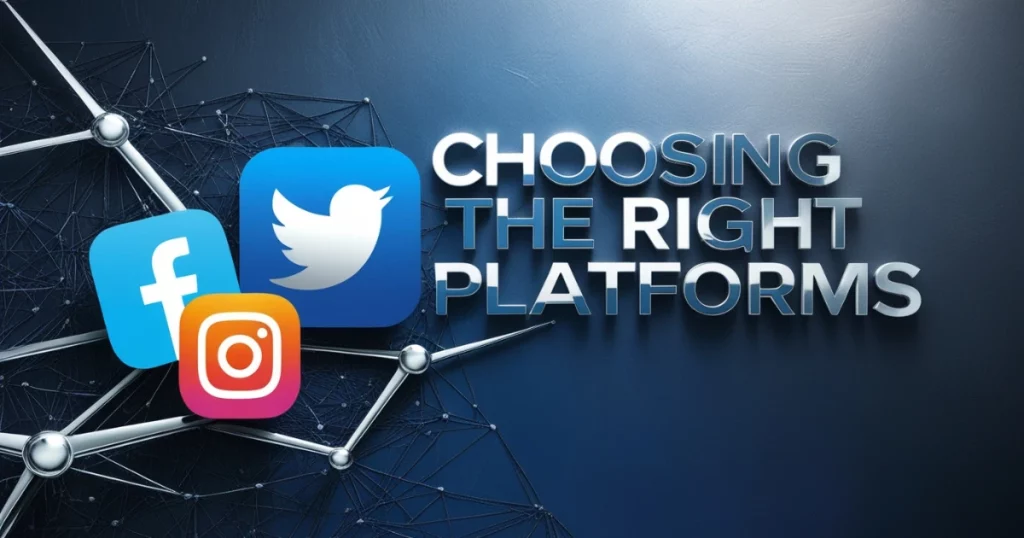
Not all social platforms are created equal—and neither is your audience. A common mistake many businesses make is trying to be everywhere at once. Instead, focus your efforts where your ideal customers are already active and engaged.
Where Is Your Audience Hanging Out?
In Thailand, Facebook remains king for B2C communication, especially among older demographics and local communities. It’s ideal for promotions, reviews, and event-based posts. If your business relies on social proof, customer interaction, or local engagement, Facebook should be at the heart of your strategy.
On the other hand, Instagram thrives with lifestyle, fashion, wellness, and hospitality brands. It’s a visual-first platform where aesthetics, storytelling, and authenticity drive performance—perfect for showcasing brand personality and behind-the-scenes content.
Understand Platform Behaviours
- Facebook: prioritises meaningful interactions, community-driven content, and link sharing
- Instagram: favours visual storytelling, quick consumption, and algorithmic momentum from reels and stories
Tailoring content formats to match these behaviours ensures you’re not just posting—you’re resonating.
Stay Consistent, Not Identical
While each platform has its nuances, your brand voice and message should remain consistent. Repurpose content smartly: turn a Facebook post into an Instagram carousel, or a long-form reel into multiple story slides.
By playing to each platform’s strengths while keeping your brand cohesive, you maximise impact without doubling your workload.
Step-by-Step Guide to Creating a Content Calendar
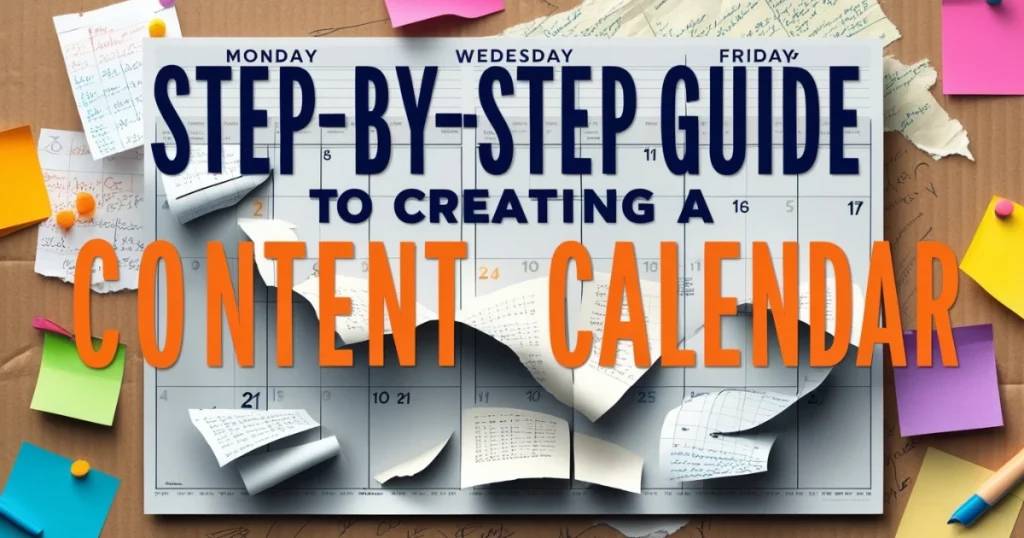
Creating a high-performing social media content calendar isn’t just about filling in boxes—it’s about building a strategic system that supports your business goals while making content creation less stressful. Here’s how to do it step by step
Step 1: Audit Your Existing Content
Before you plan forward, look back. Analyse your past posts to see what’s resonating and what’s falling flat. Are reels driving the most reach? Are carousels generating saves? Look for content types, topics, and formats that consistently perform well—and just as importantly, identify what’s missing.
Use tools like Meta Business Suite for Facebook or Instagram Insights to track:
- Engagement rates (likes, comments, shares)
- Follower growth
- Reach and impressions
This audit will help you double down on what works and eliminate guesswork.
Step 2: Map Out Your Monthly Themes
Next, create a content theme for each week or month to give your calendar structure. This helps align your posts with business objectives, promotions, or cultural events like Songkran or Loy Krathong.
Popular monthly theme ideas include:
- Customer testimonials for social proof
- Behind-the-scenes to humanise your brand
- User-generated content (UGC) to build community
- Tips & how-tos to educate and provide value
These themes become your creative framework, making brainstorming and content creation much faster and more consistent.
Step 3: Choose Your Content Types
Mixing up your content formats keeps your audience engaged and caters to different user behaviours. Aim for a balanced blend of:
- Educational content (tips, tutorials, infographics)
- Promotional posts (product launches, sales, special offers)
- Engagement-driven content (polls, questions, quizzes)
- Storytelling (behind-the-scenes, staff features, customer stories)
This variety not only prevents audience fatigue but also gives the platform algorithms more ways to push your content. Think of your content types as your toolkit—rotate through them strategically based on what fits your goals.
Step 4: Create a Posting Schedule
Decide how often you want to post on each platform—and stick to it. Frequency builds consistency, which in turn boosts your visibility.
Recommended frequency for Thailand-based businesses:
- Instagram: 5–7 posts per week (include reels, stories, carousels)
- Facebook: 3–5 posts per week (mix of graphics, links, and community posts)
Post timing matters too. Try posting between 11:00–13:00 and 18:00–20:00, when Thai users are most active. Use platform analytics to fine-tune your timing based on real audience behaviour.
Step 5: Populate Your Calendar
Now it’s time to bring everything together. Use tools like Notion, Google Sheets, or scheduling platforms like Later, Buffer, or Meta Business Suite to build your calendar.
Structure it by:
- Platform (Instagram, Facebook, TikTok, etc.)
- Content pillar (education, promo, engagement)
- Post format (reel, carousel, story, link post)
Use colour-coding to quickly visualise content balance across categories. For example, green for engagement posts, blue for educational, red for promos.
✅ Pro Tip: Build in some flexibility. Leave space for trending topics, last-minute ideas, or unexpected announcements. Your calendar should guide your content—not restrict creativity.
By following this structured approach, you’ll save time, stay consistent, and grow your presence with confidence.
Tools to Simplify Your Content Calendar Workflow
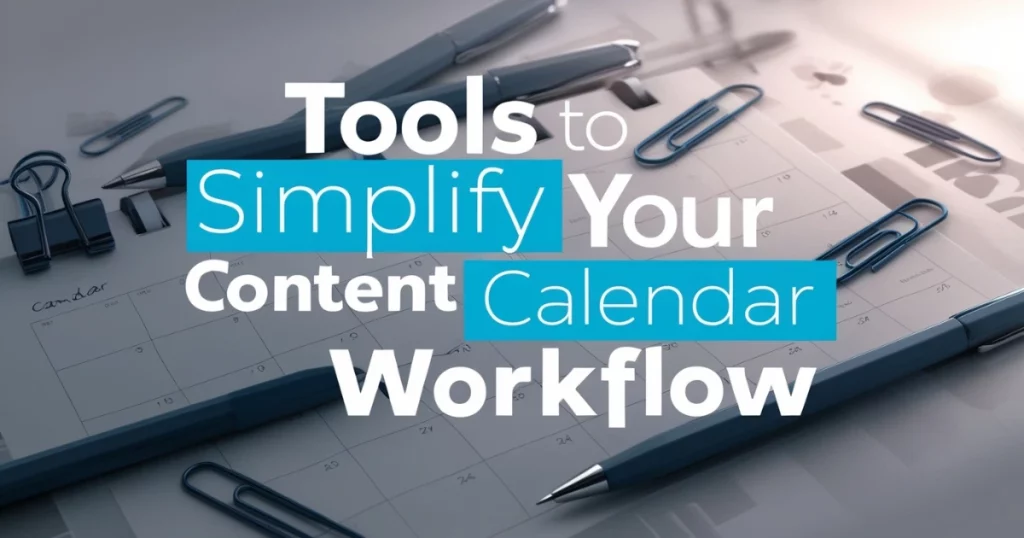
Managing your content calendar doesn’t have to be a juggling act. With the right tools, you can streamline your workflow, improve team collaboration, and save hours every week. Whether you’re a solo marketer or part of a growing team, these platforms can make your social media planning seamless.
Scheduling Made Simple
Start with a reliable scheduling tool to automate posting across platforms. Popular options include:
- Buffer – great for beginners with a clean interface
- Later – ideal for visual planning, especially on Instagram
- Hootsuite – robust analytics and multi-platform management
- Meta Business Suite – free and integrated for Facebook and Instagram
These tools allow you to plan weeks in advance, ensuring consistent posting even when life gets busy.
Collaboration & Content Management
Working with a team? Use project management tools like:
- Trello – for simple drag-and-drop task boards
- Notion – all-in-one workspace for calendars, databases, and content banks
- Asana – excellent for tracking tasks, deadlines, and responsibilities
Pair these with shared folders or cloud drives for housing reusable assets like branded templates and post copy.
Automation vs Authenticity
Automation saves time, but don’t lose the human touch. Leave room for real-time stories, responses, and engagement to keep your content authentic and relatable.
🔹 Summary Box:
The right tools streamline scheduling and improve collaboration—essential for scaling your content output.
Measuring and Optimising Your Calendar’s Performance
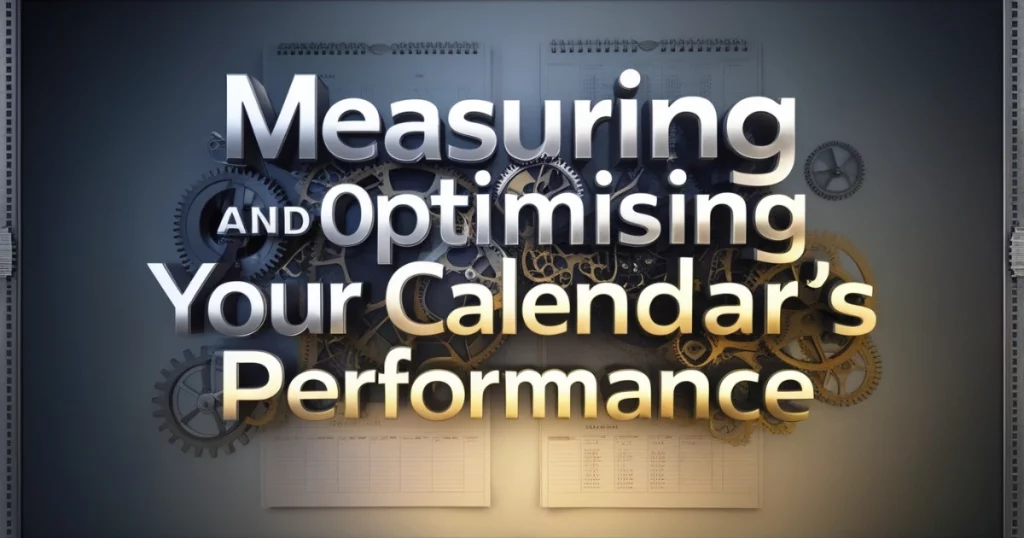
Creating a content calendar is just the beginning—refining it is where the real growth happens. To ensure your efforts pay off, you need to track performance consistently and optimise based on real data.
Tap into Platform Analytics
Start by using built-in analytics tools like Instagram Insights or Facebook’s Page Insights to monitor:
- Engagement rates (likes, shares, saves, comments)
- Click-throughs and conversions
- Reach and impressions
These metrics show you what’s working—and what isn’t.
Test, Learn, Repeat
Run A/B tests to compare content formats, captions, visuals, and posting times. For example, test a carousel versus a reel on the same topic, or post at different times to find your sweet spot.
Monthly Reviews & Paid Insights
At the end of each month, review your top- and bottom-performing posts. Look for patterns in content types, topics, or timing. If you’re running paid ads, include those insights too—they can reveal high-converting creatives worth repurposing organically.
By making optimisation part of your routine, your content calendar evolves from a planning tool into a performance engine.
Turn Planning into Performance
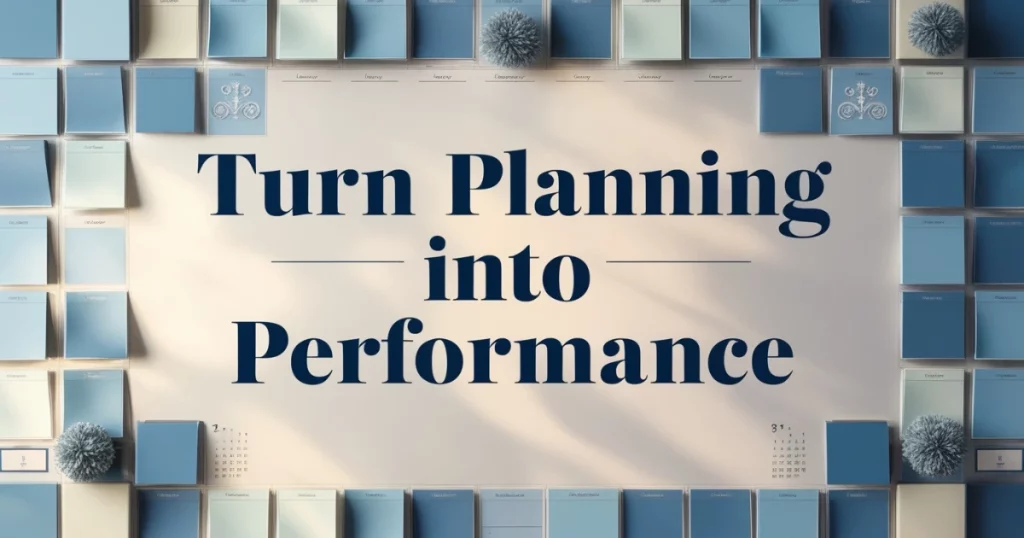
A well-structured content calendar isn’t just another marketing task—it’s your secret weapon. It brings clarity to your creative process, keeps your brand consistent, and helps you show up when it matters most. Over time, that consistency builds trust, authority, and real results.
The key? Don’t overcomplicate it. Start with simple goals, stay consistent, and evolve your strategy based on what your audience responds to. Your future self—and your brand—will thank you.
Ready to elevate your social media marketing in Thailand?
Contact Northern Kites today and let’s build a content strategy that converts clicks into customers.
Social Media Content Calendar FAQs
How far in advance should I plan my social media content calendar?
Ideally, plan your content at least 2–4 weeks ahead. This gives you time to align with business goals, upcoming promotions, and seasonal events—especially important in Thailand where holidays like Songkran or Loy Krathong can impact campaign timing.
What’s the best free tool for creating a social media calendar?
If you’re just starting out, Google Sheets or Notion are great free tools. They offer flexibility and can be customised to suit your workflow. For built-in scheduling, Meta Business Suite is a free and powerful option for Facebook and Instagram.
How many times a week should I post on Instagram and Facebook?
For best results in Thailand’s market:
- Instagram: 5–7 times per week, with a mix of reels, stories, and carousels
- Facebook: 3–5 times per week, focused on community and engagement posts
How do I measure if my content calendar is working?
Track key metrics like engagement rate, reach, website traffic, and conversion goals using built-in analytics (e.g. Instagram Insights, Facebook Page Insights). Review monthly and adjust your strategy accordingly.
What should I include in my content calendar?
A good content calendar should include:
- Post date & time
- Platform (e.g. Instagram, Facebook)
- Content format (reel, carousel, story)
- Content theme or pillar (educational, promo, engagement)
- Call-to-action (CTA)
- Status (draft, scheduled, published)


